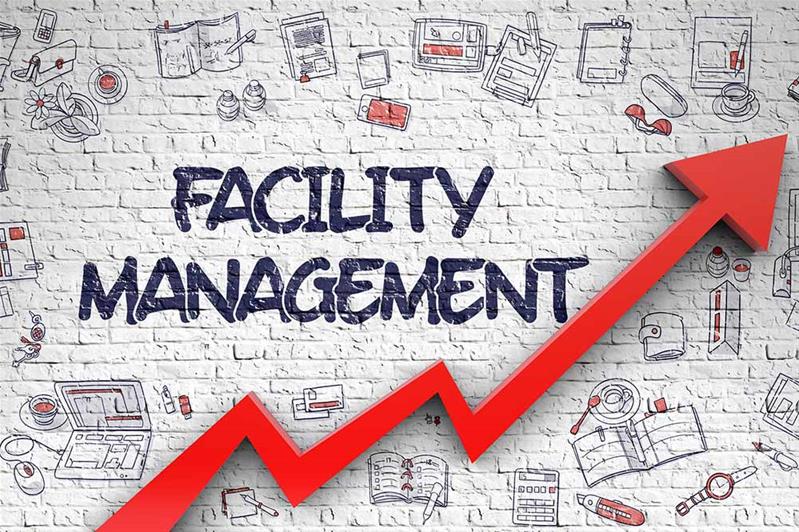Top Benefits of Total Facility Management for Streamlined Workflow
Total Facility Management (TFM) stands for a critical method to boosting operational performance by incorporating numerous solutions, such as upkeep and security, under a unified management framework. The inquiry continues to be: what particular advantages can organizations harness from taking on TFM, and exactly how might these advantages transform their operational landscape?
Enhanced Operational Effectiveness
Improved functional effectiveness is a primary advantage of implementing total facility management (TFM) methods. TFM incorporates a thorough technique to managing a facility's resources, processes, and facilities, ultimately improving procedures. By combining different solutions-- such as maintenance, safety, cleansing, and space management-- TFM improves and lessens redundancies coordination among various operational functions.
The integration of innovation more amplifies this performance. Advanced facility management systems provide real-time information analytics, making it possible for facility supervisors to make educated decisions that improve process and resource appropriation. Predictive maintenance techniques, as an example, prepare for devices failures prior to they occur, decreasing downtime and extending possession lifespan.
In addition, TFM promotes standard procedures across numerous departments, making sure uniformity and top quality in solution distribution. This uniformity decreases functional interruptions and promotes an extra joint workplace. Consequently, workers can concentrate on their core responsibilities, driving efficiency and boosting overall efficiency.

Expense Decrease and Financial Savings
Executing total facility management (TFM) not only improves operational performance yet additionally significantly adds to cost decrease and financial savings. By combining different solutions under a single management framework, companies can eliminate redundancies and enhance processes, therefore lowering operational costs. TFM allows far better purchase approaches, enabling companies to bargain bulk acquiring arrangements with distributors and provider, bring about reduced prices.
Furthermore, TFM highlights preventative maintenance, which decreases unforeseen malfunctions and prolongs the lifespan of important devices. This proactive approach not only decreases fixing expenses but also enhances the dependability of facilitiess, ensuring uninterrupted operations. In addition, energy performance campaigns, usually an essential focus of TFM, bring about considerable financial savings on energy expenses, as facilitiess are maximized for lowered energy intake.
Improved Source Management
Effective source management is a cornerstone of total facility management (TFM), making it possible for companies to optimize using their properties and labor force. By executing TFM approaches, organizations can thoroughly evaluate their resource appropriation, ensuring that every asset is made use of efficiently and efficiently. This holistic method allows for the recognition of underperforming resources and the capacity for reallocation or improvement.
On top of that, TFM promotes the assimilation of technology for real-time tracking of sources, which aids in predicting upkeep demands and avoiding costly downtime. By leveraging information analytics, organizations can make educated choices about source implementation, inevitably boosting productivity and lowering waste.
Additionally, TFM advertises a society of continuous renovation, encouraging teams to consistently assess and improve their resource management methods. Total Facility Management. This proactive position not just lessens operational disruptions but also cultivates innovation, as staff members my website are equipped to suggest renovations based on their direct experiences with resource usage
Streamlined Communication Networks
In total facility management, structured interaction networks play a crucial role in promoting partnership and efficiency throughout groups. Efficient communication makes sure that all stakeholders, including facility supervisors, upkeep staff, and company, are straightened with business goals and functional requirements. By establishing clear lines of communication, teams can swiftly resolve concerns, share updates, and execute options, thus decreasing downtime and boosting efficiency.
With centralized communication platforms, info is conveniently obtainable, enabling real-time updates on upkeep requests, source appropriation, and job timelines. This transparency not just decreases misunderstandings but also equips staff members to make enlightened decisions promptly. Structured communication facilitates far better coordination throughout emergency situations, ensuring that all employees are notified and can react immediately.

Enhanced Concentrate On Core Activities
An essential advantage of total facility management is the boosted concentrate on core activities, allowing companies to concentrate on their primary business objectives - Total Facility Management. By outsourcing non-core features such as maintenance, cleansing, and safety and security, companies can Read Full Article reroute their resources and energy towards tactical campaigns that straight add to their affordable advantage and growth
Total facility management integrates numerous operational tasks under a solitary umbrella, promoting performance and lessening redundancy. This combination not just enhances processes yet also improves accountability, guaranteeing that every element of the facility runs sympathetically without drawing away attention from what truly matters-- core service features.
Furthermore, this strategy allows staff members to devote their effort and time to tasks that drive development and enhance client complete satisfaction, instead of getting bogged down by functional difficulties. With a trustworthy facility management partner managing day-to-day operations, organizations can accomplish higher agility, react quickly to market adjustments, and preserve a sharper concentrate on their objective.
Eventually, raised focus on core tasks results in boosted total go to website efficiency, permitting organizations to strengthen their market setting and satisfy their tactical objectives extra efficiently. - Total Facility Management
Final Thought
Finally, Total Facility Management considerably boosts operational efficiency by consolidating crucial solutions and leveraging information analytics for educated decision-making. Price reductions and improved source management add to general cost savings, while structured interaction channels foster cooperation amongst stakeholders. By allowing organizations to focus on core activities, TFM not only maximizes efficiency however additionally strengthens market positioning. The combination of these advantages underscores the importance of TFM in achieving lasting operational quality.
Total Facility Management (TFM) represents a strategic technique to enhancing operational performance by integrating various solutions, such as maintenance and security, under a unified management structure.Improved operational efficiency is a primary advantage of applying total facility management (TFM) techniques. Advanced facility management systems give real-time information analytics, allowing facility supervisors to make enlightened decisions that enhance operations and source allotment.Carrying out total facility management (TFM) not just increases operational performance however also considerably contributes to set you back decrease and cost savings.Reliable source management is a cornerstone of total facility management (TFM), enabling organizations to maximize the usage of their assets and labor force.